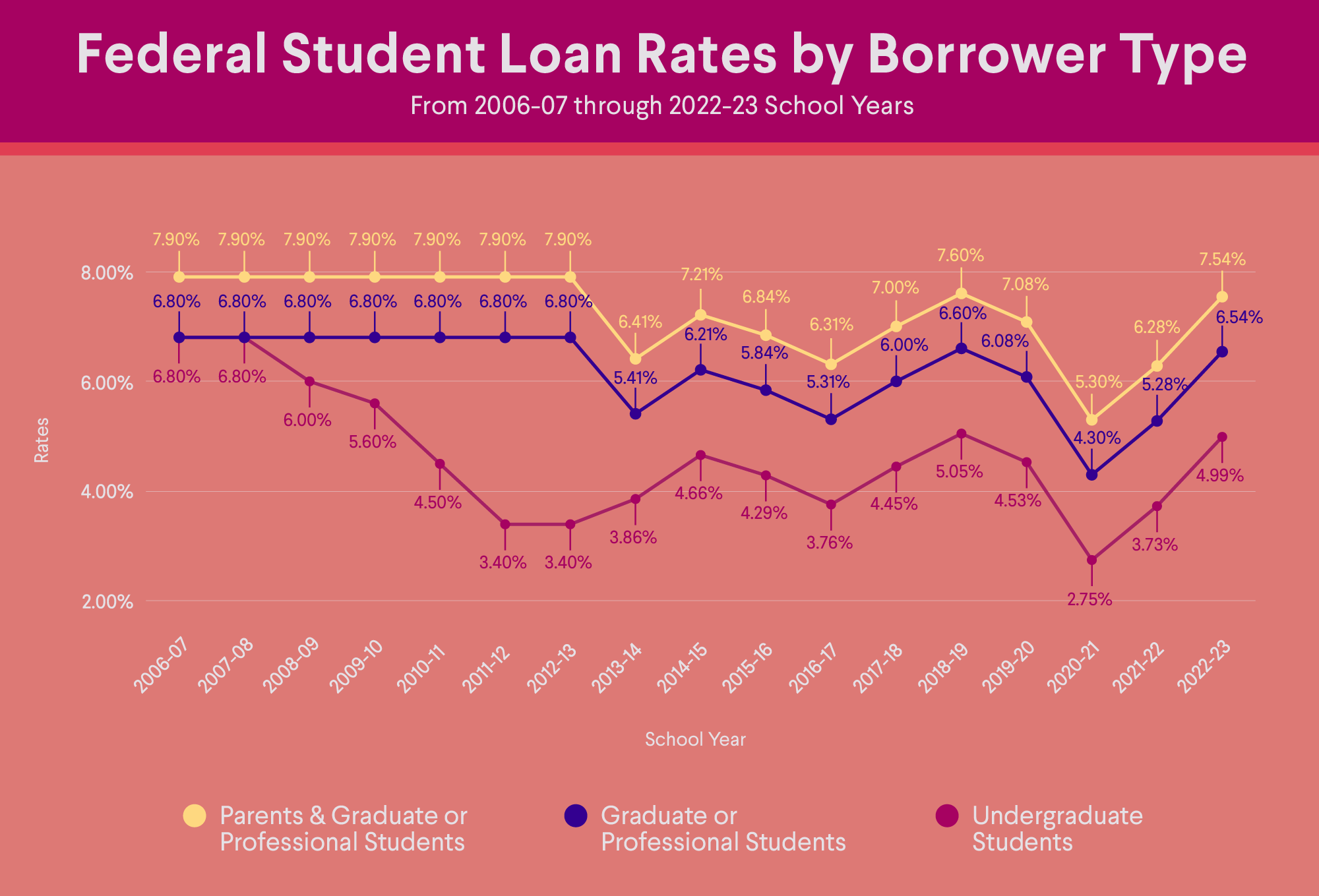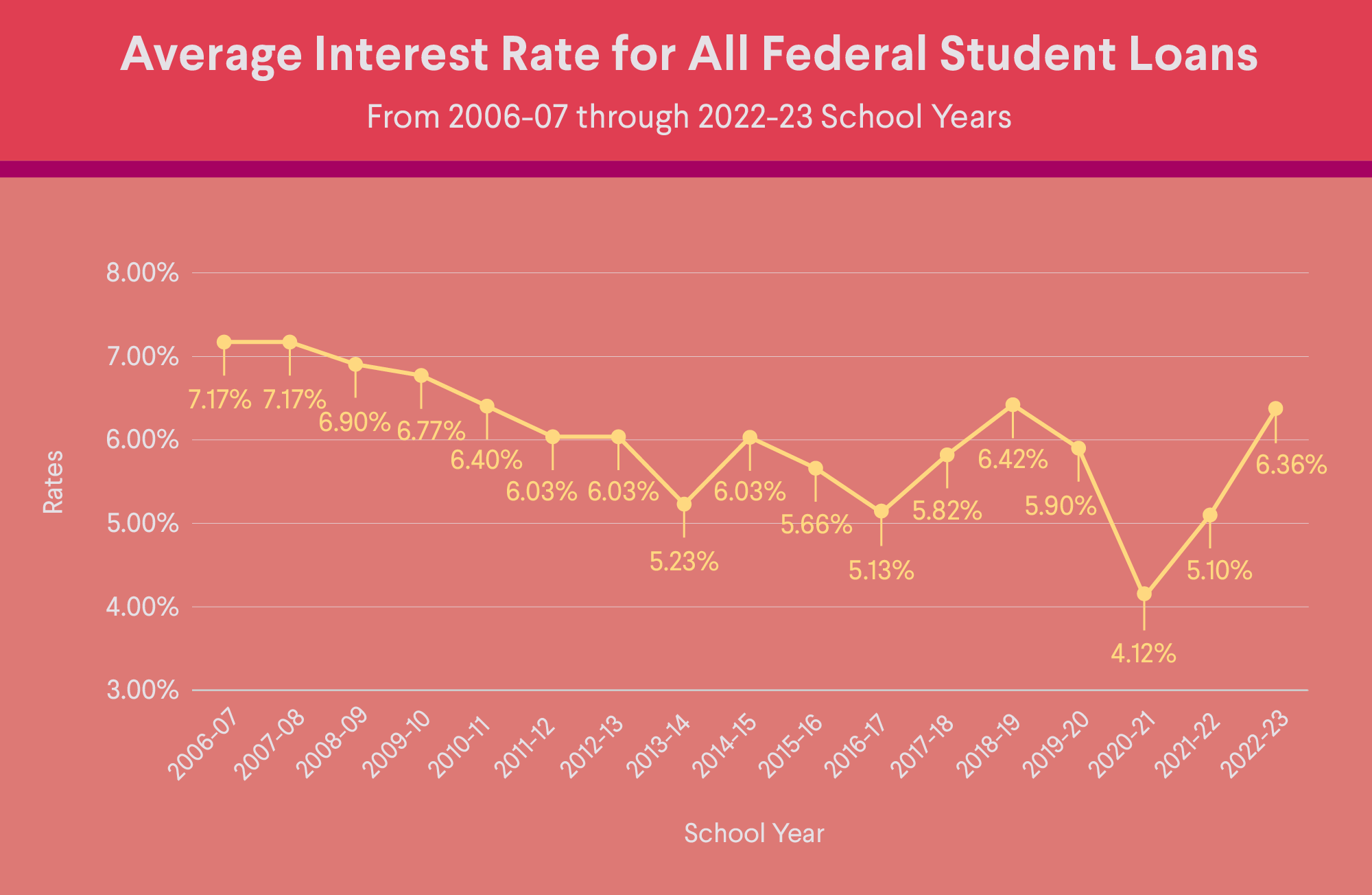5 Tips For Getting the Lowest Rate When Refinancing Student Loans
One main reason for refinancing student loans with a private lender is to combine your loans into one new loan with a lower interest rate. If you get a lower interest rate, your monthly student loan payment will go down. You’ll also pay less interest over the life of the loan.
Here, learn more about steps to take to help get a lower interest rate on student loans.
Key Points
• A student loan refinance may help borrowers get a lower interest rate if they qualify and reduce monthly loan payments.
• A strong credit history and a low debt-to-income ratio can help refinancing applicants get a better rate.
• Reducing living expenses and paying down other debt like credit card debt could be beneficial when applying for student loan refinance.
• Providing lenders with a comprehensive employment history and proof of salary increases can be useful.
• Those without a strong credit history may want to consider refinancing with a cosigner for better rates.
Reduce Your Interest on Student Loans
Consolidating multiple student loan balances into one new refinance loan with a low interest rate can be ideal for those looking to reduce the amount they owe in interest and also lower their monthly loan payment. It’s important to note, though, that if you refinance federal student loans, you lose access to federal benefits such as income-driven repayment plans.
Getting approved for student loan refinancing isn’t just a matter of submitting an application. You need a game plan — one that will help you become a strong loan candidate, who’ll qualify for a lower student loan interest rate. Here are five strategies that may help.
5-Point Plan for Getting a Low Interest Rate
1. Check your credit.
If you want to reduce your student loan interest rate through refinancing, the first thing you should do is check your credit score. The stronger your credit profile, the less risky you appear to lenders. If your credit profile is solid — meaning you have a good credit score and a low debt-to-income ratio — lenders should offer you better rates.
If, however, your credit profile isn’t quite where you want it to be, that’s OK. Take a few months to build your credit and reapply for student loan refinancing down the line to see if you qualify for a better rate.
Recommended: Why Your Debt to Income Ratio Matters
2. Take a hard look at your cost of living.
Some cities are more expensive to live in than others. Someone renting an apartment in a small Midwestern town, for example, has lower living expenses than someone who owns a row home in San Francisco. Cost of living ties directly into your debt-to-income ratio, and therefore it matters when you want to get a lower interest rate on student loans.
To some extent, this is out of your hands; your zip code helps lenders determine your cost of living. But anything you can do to pay down debt, especially high-interest credit card debt, and make choices that free up more money — such as renting a smaller place, taking on a roommate, or leasing a cheaper car — can help your case.
3. Give lenders a complete history.
Some student loan refinancing lenders consider things like where you went to school and your position at work when they weigh your application. Provide as much information as you can when it comes to your undergraduate and graduate degrees.
Be sure to also include all relevant work experience. Again, if you can show lenders that you have a solid work history and your income has steadily increased, you will appear less risky. The less riskier you are to lenders, the better your student loan interest rate is likely to be.
If there’s a job offer on the horizon, be sure to submit your offer letter with your application. And if you get a promotion while your application is under review, notify the lender immediately. Finally, if you’re in line for a promotion that will positively affect your paycheck, wait until it happens before you apply.
4. Show all your income.
When lenders ask for income information, they mean all of your income, not just job earnings. List dividends, interest earned, bonuses, and the extra money you make from your side hustle or Airbnb rental property. As long as you can prove these income sources, it will all count toward your debt-to-income ratio and help to lower it. And again, the lower this ratio, the better chances you have at qualifying for a lower student loan refinance rate.
Also, make sure your driver’s license is current and that your student loan statements are all correct. If you’re self-employed, you may want to wait until you’ve filed your taxes to apply for refinancing — it’s one of the easiest ways to prove the previous year’s income.
5. Be flexible.
If you have a number of student loans and you’re not offered the best rate when you apply for refinancing, consider refinancing only a couple of them. You may get a lower interest rate with a smaller refinance balance. You can always apply for the full balance down the road after you’ve received a raise or moved to a less expensive location.
Being flexible also means you might want to think about asking a friend or relative for help if your application isn’t as strong as you’d like. When you refinance your student loans with a cosigner who has a good credit profile and low debt-to-income ratio, you may be able to get a lower rate than if you refinanced on your own.
Refinance Student Loans With SoFi
The stronger you are as a student loan refinancing candidate, the better your chances are of getting a lower student loan refinance rate. To get the lowest rate when refinancing, check your credit, take a close look at your living expenses and debt-to-income ratio, give lenders a complete history of your education and employment, make sure to include all of your income sources in the application, and finally, be flexible, even if that means applying with a cosigner.
Keep in mind, though, that if you choose to refinance your federal student loans with a private lender, you lose access to federal benefits, such as student loan forgiveness and income-driven repayment plans. Make sure you don’t plan on using these benefits now or at any point in the future before deciding to refinance.
If you do think a student loan refinance may be right for you, consider SoFi. SoFi offers competitive rates and does not charge origination fees. It takes just a few minutes to see your rates, and your credit score will not be affected when you prequalify.
FAQ
Can you negotiate your student loan interest rate?
Not necessarily. Interest rates are determined by both the market and your credit profile, leaving little room for negotiation. You could, however, present your lowest offer to another lender to see if they will match that.
How can I get a lower interest rate when refinancing my student loans?
Strategies to potentially get a lower interest rate when refinancing student loans include building your credit profile, having a reliable source of income, and making sure your debt-to-income ratio is low.
Is it possible to get lower rates when refinancing student loans?
Yes, it is possible to get a lower interest rate when refinancing student loans. Your student loan interest rate will generally depend on current market rates, your credit profile, and your debt-to-income ratio. A strong credit history and a lower debt-to-income ratio may help you get a lower rate.
SoFi Student Loan Refinance SoFi Loan Products
Terms and conditions apply. SoFi Refinance Student Loans are private loans. When you refinance federal loans with a SoFi loan, YOU FORFEIT YOUR ELIGIBILITY FOR ALL FEDERAL LOAN BENEFITS, including all flexible federal repayment and forgiveness options that are or may become available to federal student loan borrowers including, but not limited to: Public Service Loan Forgiveness (PSLF), Income-Based Repayment, Income-Contingent Repayment, extended repayment plans, PAYE or SAVE. Lowest rates reserved for the most creditworthy borrowers. Learn more at SoFi.com/eligibility. SoFi Refinance Student Loans are originated by SoFi Bank, N.A. Member FDIC. NMLS #696891 (www.nmlsconsumeraccess.org).
SoFi loans are originated by SoFi Bank, N.A., NMLS #696891 (Member FDIC). For additional product-specific legal and licensing information, see SoFi.com/legal. Equal Housing Lender.
Third-Party Brand Mentions: No brands, products, or companies mentioned are affiliated with SoFi, nor do they endorse or sponsor this article. Third-party trademarks referenced herein are property of their respective owners.
Non affiliation: SoFi isn’t affiliated with any of the companies highlighted in this article.
Disclaimer: Many factors affect your credit scores and the interest rates you may receive. SoFi is not a Credit Repair Organization as defined under federal or state law, including the Credit Repair Organizations Act. SoFi does not provide “credit repair” services or advice or assistance regarding “rebuilding” or “improving” your credit record, credit history, or credit rating. For details, see the FTC’s website .
Financial Tips & Strategies: The tips provided on this website are of a general nature and do not take into account your specific objectives, financial situation, and needs. You should always consider their appropriateness given your own circumstances.
SOSLR-Q225-007
Read more







